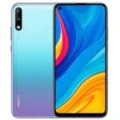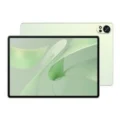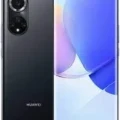Huawei MatePad Air (2024)
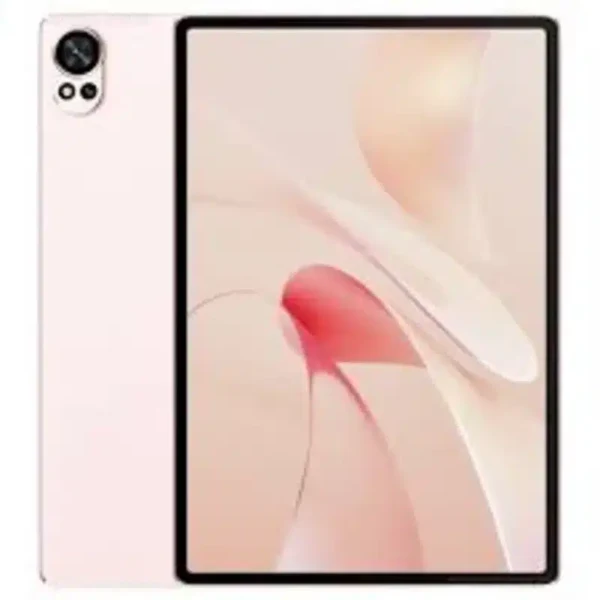


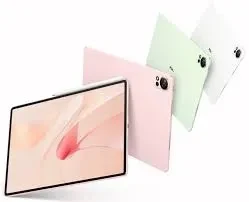
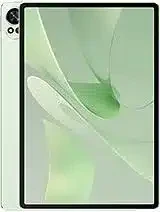
- : 8/12GB RAM
- : 12.0" 2800x1840 pixels
- : 10100mAh 66W
- : 13MP 2160p
Huawei MatePad Air (2024) Review-Based Description
The Huawei MatePad Air (2024) is a sophisticated and lightweight tablet, designed to cater to the needs of both professionals and casual users. It excels in offering a balanced combination of performance, display quality, and portability, making it a strong contender in the tablet market.
Design and Build
Crafted with a sleek aluminum body, the MatePad Air is both stylish and durable. Its thin profile and lightweight design make it easy to carry, whether for work or travel. The build quality feels premium, with attention to detail in every aspect of its construction.
Display
The tablet features a 10.8-inch IPS LCD display with a crisp resolution of 2560 x 1600 pixels. The visuals are vibrant and sharp, making it perfect for watching videos, reading, or creative work. The 90Hz refresh rate ensures smoother animations and a more responsive touch experience, adding to the overall user satisfaction.
Performance
Powered by the Kirin 990E chipset and coupled with up to 8GB of RAM, the MatePad Air delivers impressive performance across a range of applications. Whether you’re multitasking, gaming, or streaming, the tablet handles everything with ease. It offers storage options of 128GB and 256GB, expandable via microSD, providing ample space for apps, files, and media.
Software and Features
Running on HarmonyOS 4.0, the MatePad Air is optimized for productivity and ease of use. The interface is user-friendly, with support for multi-window operations, allowing users to work on multiple tasks simultaneously. Huawei’s ecosystem integration means seamless connectivity with other Huawei devices, enhancing the overall user experience.
Battery and Charging
With a 7,250mAh battery, the MatePad Air is designed to last through a full day of use. It supports 22.5W fast charging, so you can quickly recharge and get back to your tasks without long interruptions.
Camera System
The tablet is equipped with a 13MP rear camera and an 8MP front camera. While not a substitute for a smartphone camera, these are more than sufficient for video calls, scanning documents, or occasional photography.
Audio Quality
The audio experience on the MatePad Air is notable, thanks to its quad-speaker setup tuned by Harman Kardon. The speakers deliver rich and clear sound, making it enjoyable to watch movies, play games, or listen to music.
Connectivity Options
The MatePad Air supports Wi-Fi 6, Bluetooth 5.1, and optional 4G LTE, ensuring reliable and fast connections. The USB Type-C port facilitates fast charging and data transfer, adding to the device’s versatility.
Accessories
The tablet is compatible with the Huawei M-Pencil and Smart Magnetic Keyboard, making it a versatile tool for creative work, note-taking, and productivity on the go.
Conclusion
The Huawei MatePad Air (2024) is a well-rounded tablet that offers exceptional value for users seeking a blend of performance, portability, and premium design. Whether for work or entertainment, it stands out as a reliable companion in various scenarios.
Want to Learn More?
Furthermore Visit the official website of Huaweifor detailed information about the Huawei MatePad 11.5 S: Huawei Official Website
Still Unsure?
If you’re still unsure about your choice, explore other options from Huawei at your nearest store: Huawei Store
Specs
Network
| 2G Network GSM 850 / 900 / 1800 / 1900 - SIM 1 & SIM 2 (dual-SIM) CDMA 800 / 1900 |
N/A |
| 3G Network |
N/A |
| 4G Network |
N/A |
LAUNCH
| Announced | August, 2025 |
| Status | Available. Released 2024, August 13 |
BODY
| Dimensions | 270 x 183 x 5.9 mm (10.63 x 7.20 x 0.23 in) |
| Weight | 555 g (1.22 lb) |
| SIMs SIM (Subscriber Identity Module) is a small card that contains mobile network subscriber's account information. This allows the phone using the card to attach to a mobile network. The SIM card is most commonly associated with GSM and UMTS mobile networks. Moving a SIM card from one phone to another allows a subscriber to switch mobile phones without having to contact their mobile network carrier. SIM cards can also be used by a phone to store limited amounts of data, such as phone numbers and text messages. |
No Stylus support (magnetic) |
Display
| Display Type Display Technology => A number of display technologies and types used in mobile phones => TFT (Thin Film Transistor), IPS (In-Place Switching), OLED (Organic Light Emitting Diode), AMOLED (Active-Matrix Organic Light-Emitting Diode), Super AMOLED (an even advanced version of AMOLED), Resistive Touchscreen (Resistive touchscreens contain two layer of conductive material with a very small gap between them which acts as a resistance), Capacitive Touchsceen (Capacitive touchscreen technology consists of a layer of glass coated with a transparent conductor) | IPS LCD, 144Hz, 1000 nits (peak) |
| Size | 12.0 inches, 426.4 cm2 (~86.3% screen-to-body ratio) |
| Resolution | 2800 x 1840 pixels, 3:2 ratio (~279 ppi density) |
PLATFORM
| Operating System OS => Every computer system run on a base software called Operating System (OS). Operating System controls all basic operations of the computer (such as smartphone, PDAs, tablet computers and other handheld devices). The Operating System allows the user to install and run third party applications (apps), apps are used to add new functionality to the device. | HarmonyOS 4.2 |
MEMORY
| Card Slot Memory Card Slot is a special slot for inserting a memory card. Memory cards allow you to expand the phone's built-in memory, A memory card (sometimes called a flash memory card or a storage card) is a small storage medium used to store data such as text, pictures, audio, and video, for use on small, portable or remote computing devices such as mobile phones, mp3 players, digital cameras. | No |
| Internal | 256GB 8GB RAM, 256GB 12GB RAM, 512GB 12GB RAM |
MAIN CAMERA
| Cameras Specs Today’s smartphones come equipped with a very comprehensive set of camera related specifications. Our smartphone, for many of us, has become our primary camera due to it being the one we always have with us. |
13 MP, f/1.8, (wide), PDAF 8 MP, f/2.2, (ultrawide) |
| Video | 4K@30fps, 1080p@30fps |
| Camera Features | LED flash |
SELFIE CAMERA
| Cameras Specs Today’s smartphones come equipped with a very comprehensive set of camera related specifications. Our smartphone, for many of us, has become our primary camera due to it being the one we always have with us. |
8 MP, f/2.2 |
| Video | 1080p@30fps |
SOUND
| Loudspeaker | Yes, with stereo speakers (6 speakers) |
| 3.5mm jack | No |
COMMS
| WLAN |
Wi-Fi 802.11 a/b/g/n/ac/6, dual-band |
| Positioning |
GPS, GLONASS, BDS, GALILEO, QZSS |
| Bluetooth Bluetooth is a wireless communications technology for exchanging data between mobile phones, headsets, computers and other network devices over short distances without wires, Bluetooth technology was primarily designed to support simple wireless networking of personal consumer devices. | 5.2, A2DP, LE |
| Infrared Infrared connectivity is an old wireless technology used to connect two electronic devices. It uses a beam of infrared light to transmit information and so requires direct line of sight and operates only at close range. | |
| USB | USB Type-C 3.1, OTG, magnetic accessory connector |
| NFC NFC (Near field communication) is a set of standards for smartphones and similar devices to establish peer-to-peer radio communications with each other by touching them together or bringing them into proximity, usually no more than a few inches. | |
| Radio |
Features
| Sensors Sensors are electronic components that detects and responds to some type of input from the physical environment. The specific input could be light, heat, motion, moisture, pressure and location, The output is generally a signal that is converted to use in computing systems, a location sensor, such as a GPS receiver is able to detect current location of your electronic device. |
Accelerometer, gyro, compass, proximity (accessories only) |
BATTERY
| Battery Type Battery Type => Cell phones run on various kinds of batteries depending on the manufacturer, phone size or shape and features. There are basically four types of cell phone batteries => Lithium Polymer, Lithium Ion, Nickel Metal Hydride and Nickel Cadmium. | Li-Ion (Lithium Ion) |
| Charging The functionality responsible for recharging batteries in portable devices, such as mobile phones, significantly influences both battery lifespan and the practicality of daily product usage.The charging process, encompassing factors like voltage, current, and completion actions, is contingent upon the battery's size and type.Contemporary battery chargers dynamically adjust charging parameters based on the battery's current charging state. Charging an empty battery poses no safety risk, allowing for a quicker charging process. Consequently, many charging speed benchmarks, including ours, specify the battery level achieved after a 30-minute session on an empty battery.Standard chargers with a power output of 5V/1A, equivalent to 5W, serve as a baseline, with anything surpassing this speed classified as quick or fast charging. | 66W wired |
MISC
| Colors |
Pink, Green, White, Gray |
| Price | About 370 EUR |
TESTS
Reviews
Disclaimer Note
We strive to maintain accurate and up-to-date content on our website for general information purposes only. Please refrain from using the material for business, legal, or any other decisions.


